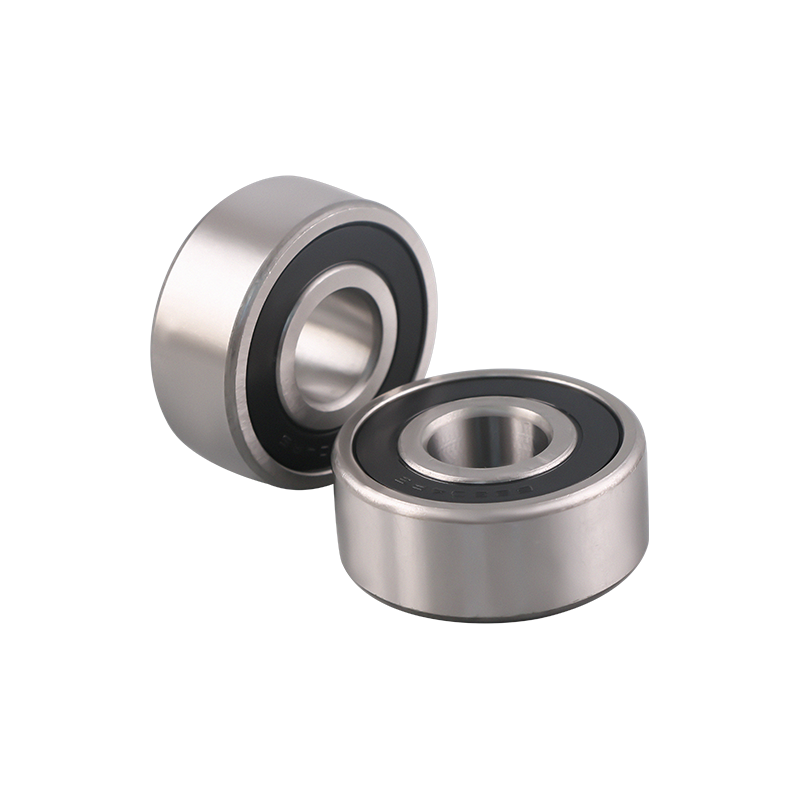Firstly, it is important to consider the load that deep groove ball bearings have to withstand. Ideally, the bearings must be subjected to a radial load of P>C0r/100 in order to prevent slippage. However, the actual radial load is usually much higher than this - mainly because of the weight of the supported parts and external forces.
Dimensionless parameters of the inner ring
In this article, we have developed a method to calculate the dimensionsless parameters of the inner ring of a deep groove ball bearing. The method uses the same numerical data as that of the analytical methods but with the addition of a dimensionally correct formulation. The numerical data is obtained from simulations with two types of bearings.
Dimensionless parameters of the inner ring of a
deep groove ball bearing are the diameter and the rotational speed of the inner ring of the bearing. These parameters are important for the design phase. Higher DN values translate to higher maximum contact pressures and higher Von Mises effective stress. However, decreasing DN values leads to lower contact area A. Therefore, it is important to take these parameters into account in the design phase of the bearing.
Self-aligning units
Self-aligning ball bearings are designed to accommodate both static and dynamic misalignments. They are also characterized by a low friction coefficient and excellent load performance. They also reduce noise and are easy to maintain. If you're looking for an economical bearing, consider self-aligning ball bearings.
The material of self-aligning deep groove bearings is important to the performance of the bearing. Some materials are better for high-speed applications, while others are better for low-speed operations. The type of material you choose will depend on the operating speed, load, and environment. In general, a self-aligning bearing can last a million rotations before needing to be serviced.
One of the most important considerations when selecting a self-aligning deep groove ball bearing is the type of load. The most common axial load for self-aligning ball bearings is axial, so the angle of contact is the most important consideration. Cylindrical roller bearings and double-row angular contact ball bearings are good choices for axial loads.
Load-carrying capacity
Many scholars have studied the load-bearing capacity of different types of bearings, but few have looked at deep groove ball bearings. One of the most popular methods, developed by Harris and Kotzalas, only considers angular contact ball bearings. Such bearings can only sustain small axial and overturning forces. In order to understand how deep groove ball bearings cope with radial loads, more research is needed.
Axial load-carrying capacity of deep groove ball-bearings depends on their size, internal construction, and operating clearance. Increasing axial load can lead to excessive running noise and reduced bearing life.
Lifespan
Deep groove ball bearings are widely used in a variety of applications. These types of bearings have many advantages, including low friction and low operating temperature. In addition, they are very reliable and require little maintenance once they are installed. The lifespan of these bearings is also extended by the fact that they don't require additional lubrication, making them an ideal choice for high-rotation environments.
Deep groove ball bearings are commonly used in automobile wheels, industrial machinery, and appliances. They provide high radial load support and can handle a small amount of axial load. They also have an exceptionally low friction coefficient, making them ideal for large-scale applications that require high axial loads.
Lubricant compatibility
Deep groove ball bearings are typically lubricated with grease or oil. While these lubricants are compatible with many types of materials, they also have varying levels of temperature resistance and viscosity. It is important to consider these factors when choosing a lubricant for your bearings, as well as your application requirements.
There are a variety of lubricants on the market today, including petroleum-based and synthetic oils. Petroleum-based oils are commonly used in industrial settings, while synthetic oils are used in high-temperature environments. When selecting a lubricant, you should consider your application, bearing temperatures, and the n*dm speed factor (the diameter of the balls). Other considerations include cost and time before usage.






